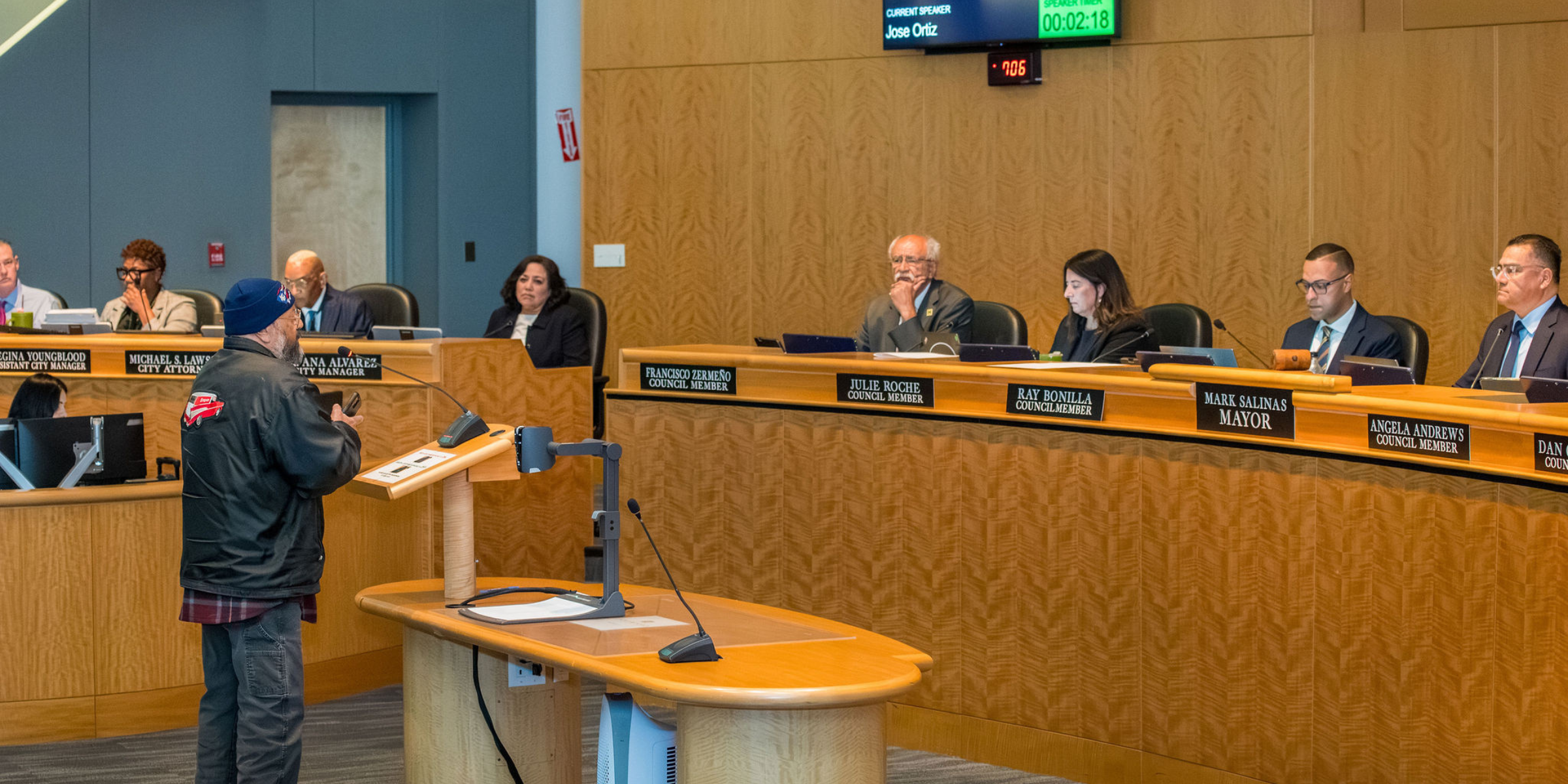GHG Reduction Measures Framework
Structure of GHG Reduction Measures
As part of the CAP Update process, the City developed a comprehensive set of measures to reduce communitywide GHG emissions and achieve the City’s climate action targets. Each measure is supported by a set of actions that provide measurable GHG emissions reduction that is supported by substantial evidence. The City also developed a set of measures and actions for offsetting GHG emissions through carbon sequestration, established under a sector called “Carbon Sequestration.” Measures and actions are organized according to the following hierarchy:
- Sectors. Sectors define the GHG emissions category in which the GHG reductions will take place and include Building Energy, Transportation, Solid Waste, Water and Wastewater, and Carbon Sequestration.
- Measures. Measures identify specific goals (i.e., activity data targets by 2030 and 2045) to address GHG emissions in each sector.
- Actions. Actions identify the programs, policies, funding pathways, and other specific commitments that the City will implement. Each measure contains a suite of actions, which together have been designed to accomplish the measure goal.
Type of GHG Reduction Measures
Measures and actions can be either quantitative or supportive, depending on whether they directly result in GHG emissions reductions or support direct reductions.
- Quantitative. Quantitative measures and actions result in GHG emissions reductions that can be quantified and summed to show how Hayward will make progress towards and meet its climate action targets. The emissions reductions expected from implementation of these measures and actions are supported by substantial evidence such as peer-reviewed research that establishes their effectiveness for reducing GHG emissions.
- Supportive. Supportive measures and actions are critical to the overall success of a CAP and provide support so that the quantitative measures and actions will be successfully and equitably implemented. Though these measures and actions may also be quantifiable and have substantial evidence to support their overall contribution to GHG reduction, they are not quantified for one or more factors – including a low GHG reduction benefit, indirect GHG reductions, or potential for double-counting – and do not contribute directly to the expected GHG reduction targets.
CAP Measures Cost Ranges
Climate action plans exhibit high variability in implementation costs depending on the GHG emissions reduction measures identified, their level of specificity, and the accompanying funding and financing strategies, which may vary depending on the scope of the project. The cost range estimates are based on cost data derived from existing and past projects, case studies, and available research. For each GHG emissions reduction measure, the cost description focuses on both internal (City) costs and external (community) costs and provides insight into the variability of these costs, including the primary variables that may affect cost effectiveness such as upfront costs, lifecycle costs, incremental or marginal costs, and the cost of doing nothing.
This GHG emissions reduction measures cost range estimate analysis is not intended to provide exact and precise cost estimates for each of the measures. The costs described for each GHG emissions reduction measure are variable and provide a general range carried by differed parties associated with the measures. For more details regarding specific cost consideration and variables, refer to Appendix E. The GHG measures proposed for the CAP and listed below have been broken down into three cost segments, as summarized in Table 10.
Table 10: Cost Categories
COST CATEGORIES | CITY | COMMUNITY |
|---|---|---|
| Low-Cost | Goals associated with low upfront costs and will only require staff time to implement, such as: • Developing partnerships • Policy Updates • Community Outreach | Goals associated with low upfront costs compared to existing alternatives, such as: • Additional energy bill costs for renewable energy compared to fossil fuel-based energy |
| Moderate-Cost | Goals associated with moderate upfront costs to the City and require moderate capital costs or consultant time along with staff time, such as: • Feasibility Studies • Incentive and Compliance Programs • Pilot Projects | Goals associated with moderate upfront costs that are not comparable to existing costs nor are offset over lifetime, such as: • New fees from utilities or city taxes • Upfront costs partially offset by rebate opportunities |
| High-Cost | Goals associated with high upfront costs and require substantial investments into infrastructure and technology system upgrades, such as: • Bike Lanes • Energy Storage Systems • EV Charging Networks | Goals associated with high upfront costs that are not comparable to existing cost nor are offset over lifetime, such as: • New electric vehicle purchase prior to existing vehicle replacement |
Key Pillars of GHG Reduction Measures
Community-focused climate action often requires community-level behavioral changes and buy-in to be implementable and successful. This means that many factors aside from GHG emissions reductions need to be considered and balanced. To position a CAP to best achieve the City’s targets, the actions supporting each measure were developed to be consistent with a set of key pillars. Each key pillar emphasizes specific criteria that play an essential role in the implementation of climate action. The key pillars are:
- Structural Change. Includes ordinances, codes, requirements, new programs, pilot programs, or other policy that provides some guarantee of behavior change going forward. Structural change actions are usually quantitative actions and provide the GHG emissions reduction mechanism for the associated measure to be effective.
- Feasibility Studies. Includes feasibility studies, City-led plans, or other investigative or strategy documents that help the City develop a strategy for measure or action implementation, especially for measures or actions that are more controversial or complicated.
- Funding. Includes grants, rebates, financing, and other capital avenues for ensuring that the associated measure’s costs are supported.
- Equity. Includes actions to mitigate potential equity impacts of other actions, such as re- investment into underserved communities, or policies and programs to protect against an increased potential for displacement or increased cost burdens in the community. Equity actions help ensure the overall measure and approach can pass the equity guardrails, as described in Section 5.
- Education. Includes outreach, educational events, and engagement campaigns to incentivize community participation in the CAP and the new programs, policies, and incentives that have the potential to move the needle on GHG reductions.
- Partnerships. Includes actions that focus on partnerships with community-based organizations, other public agencies, and private-sector partners to create new programs the City cannot achieve alone.
Co-Benefits of GHG Reduction Measures
Climate action measures will also produce additional co-benefits beyond GHG emissions reductions that the community will see from implementing the CAP. These co-benefits will have long-term positive impacts that will help Hayward reach its community goals. The co-benefits identified for each CAP Update measure include the following.
Improved Health and Safety: Developing a healthier community with reduced respiratory illnesses through improving both indoor and outdoor air quality, enhancing overall safety and property protection by bolstering adaptive capacity, and elevating quality of life by fostering more avenues for physical activity, increasing access to green spaces, and maintaining thermal comfort.
Climate Change Resilience: Increased ability of community to prepare for, mitigate, and recover from climate hazards including extreme heat, sea level rise, flooding, wildfire, landslides, and drought.
Environmental Quality & Ecosystem Services: Actions that improve the health of local ecosystems can also result in a variety of public benefits including reducing pollutants in local creeks and runoff to the bay, providing species habitat which supports a more biodiverse landscape, improving water and air quality, reducing local flood risk, and providing recreation benefits for the community enjoyment.
Sustainable Land Use Planning: Through alignment with CEQA and the Housing Element Update, this CAP can help focus development in a manner that enhances human-centered economic corridors including transit-oriented development. A key co-benefit of a comprehensive and updated CAP is the promotion of thoughtful development that will complement the City’s sustainability goals. This is achieved by creating a clear pathway for new development so it can align with Hayward’s plan for reducing GHG emissions.
Jobs Development: Initiative aimed at advancing clean energy adoption and sustainable business practices constitute a fundamental element in fostering the establishment of lucrative, well- compensated, and all-encompassing employment opportunities. These efforts will reciprocally uphold Hayward's climate targets and sustained economic well-being.








